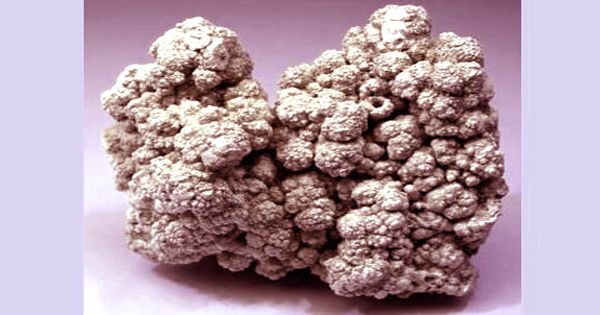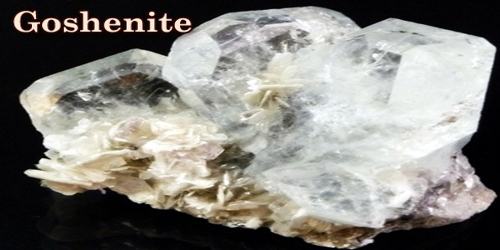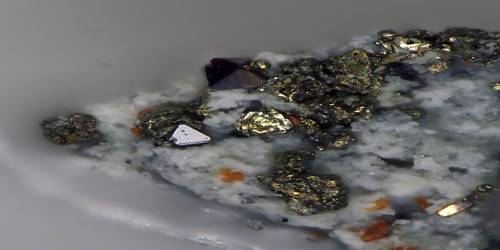Monohydrocalcite is a mineral that is a hydrous form of calcium carbonate, CaCO3·H2O. It is a hydrated trigonal form of calcite, which is white to greyish or light green in color and occurs in massive form. It was formerly also known by the name hydrocalcite, which is now discredited by the IMA. It is a trigonal mineral which is white when pure.
General Information
- Category: Carbonate minerals
- Formula: (repeating unit)CaCO3H2O
- Crystal system: Trigonal
- Crystal class: Trapezohedral (32) (same H-M symbol)
- Color: Colorless, white (especially if dehydrated)

Monohydrocalcite – a hydrated trigonal form of calcite
Properties
Monohydrocalcite is not a common rock-forming mineral but is frequently associated with other calcium and magnesium carbonate minerals, such as calcite, aragonite, lansfordite, and nesquehonite.
- Hardness: 2 – 3
- Specific Gravity: 2.95
- Crystal System: Trigonal
- Hardness: 2 – 3 on the Mohs scale
- Cleavage: Perfect
- Density: 2.95 g/cm3 (Measured) 2.48 g/cm3 (Calculated)
- Habit: Cryptocrystalline – This occurs as crystals too small to distinguish with the naked eye.
- Luminescence: Fluorescent, Short UV=vivid green, Long UV=green.
- Luster: Earthy (Dull)
- Streak: white
Occurrence: In lake-bed sediments and as tuffaceous deposits on lake margins, formed by precipitation at pH > 8.0 and high Mg: Ca or by biological activity; in caves, in speleothems, crusts, and “moonmilk,” probably formed from an aerosol, possibly in the presence of organic matter; rarely in hydrothermal mineral deposits.
Monohydrocalcite has been observed in air conditioning systems, and in moonmilk deposits in caves, both probably formed from the spray of carbonate-rich fluids. It is well known in Robe on the Limestone Coast of South Australia as a component of beach sands of Lake Fellmongery and Lake Butler, where it is believed to be formed from algal spume. Other lacustrine deposits include Lake Issyk-Kul, Kyrgyzstan, Lake Kivu, the Democratic Republic of the Congo, and Solar Lake, Sinai.
Association: Calcite, aragonite, hydromagnesite, nesquehonite.
















